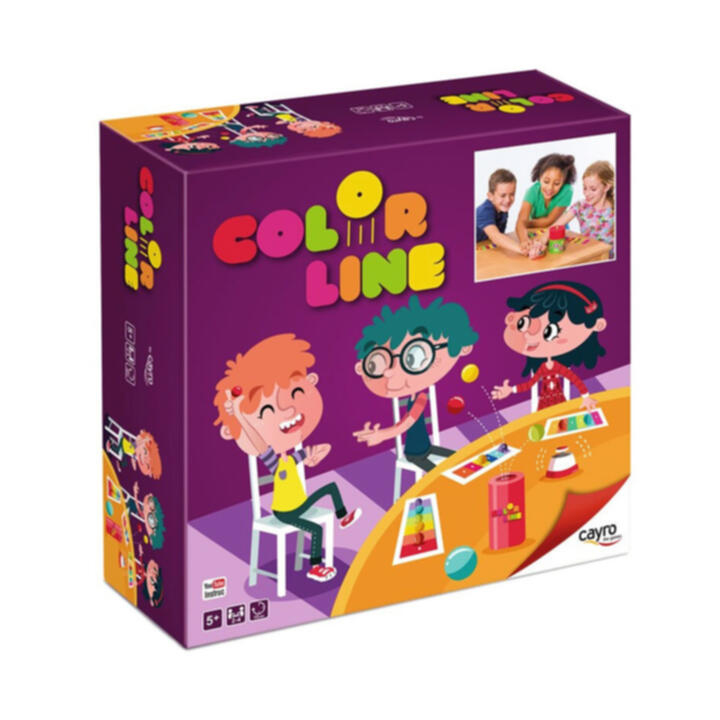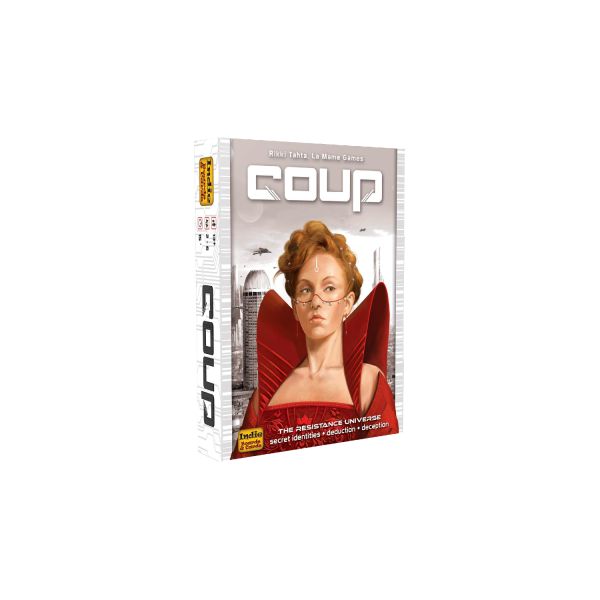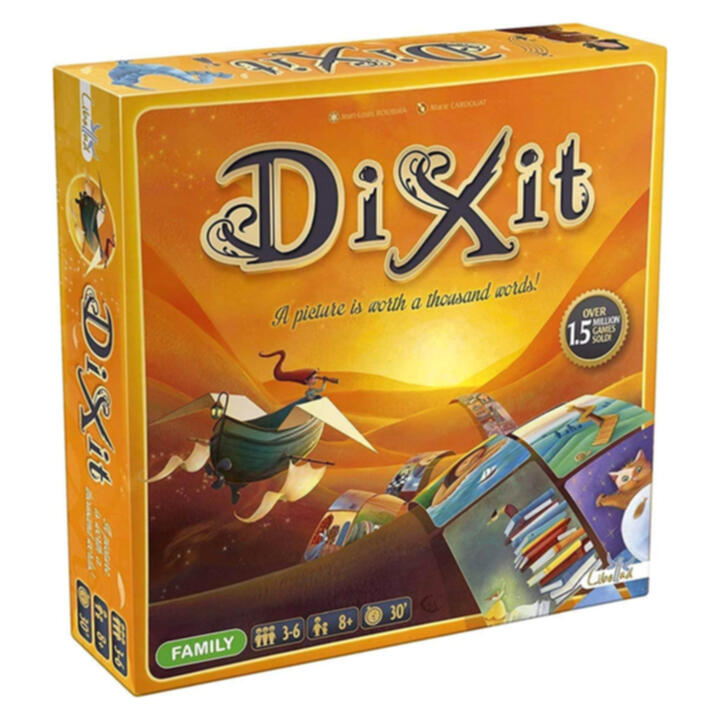Board games corner
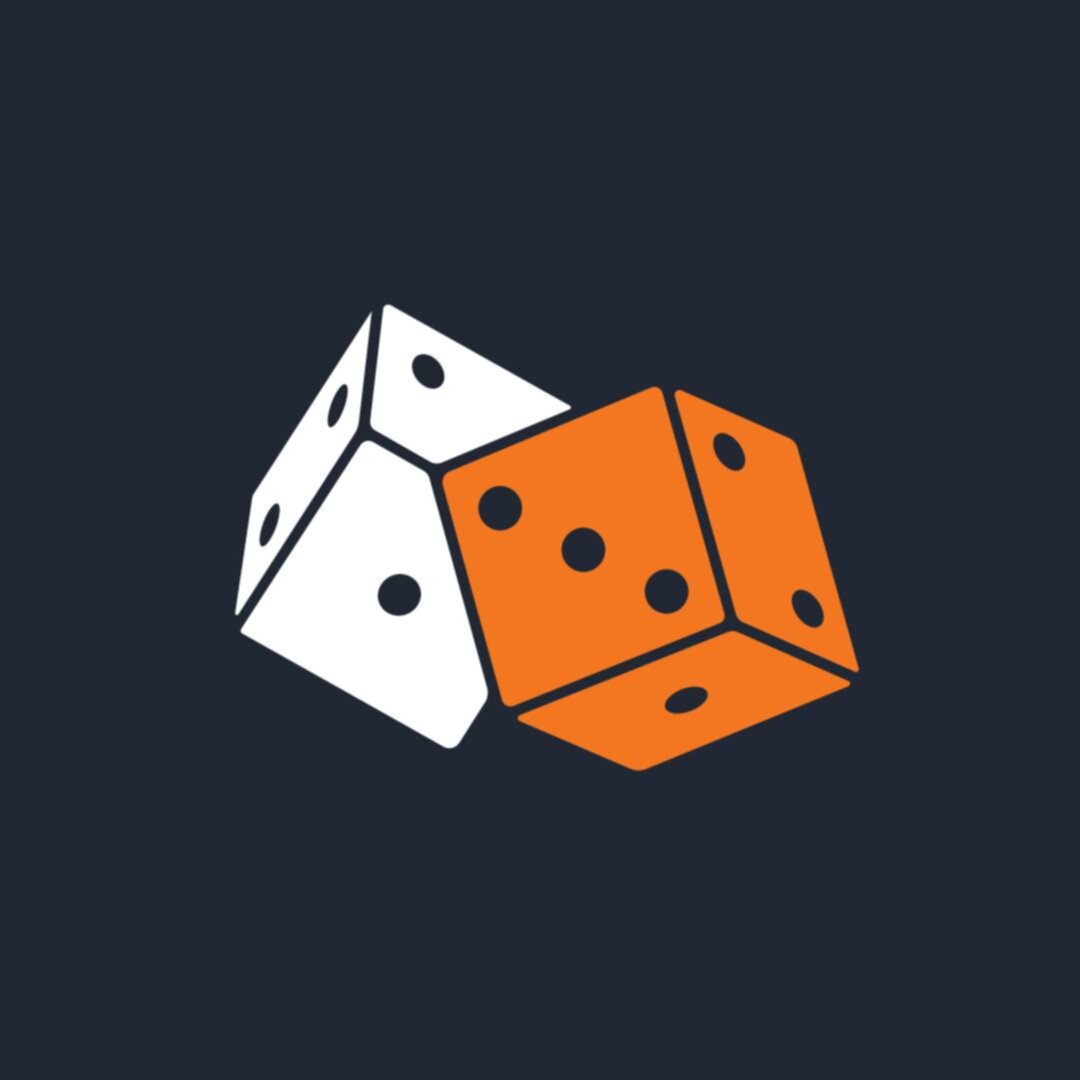
Board Games Corner – is the largest store of board games in Georgia, where more than 300 cognitive, entertaining and interesting board games are collected. In addition to the store, there is also a club on site where you can play various board games.

Board game Saboteur for kids
It’s the classic game of SEQUENCE made just for kids! Play an animal card from your hand, and place your chip on the corresponding animal on the board. Wild cards add excitement to the game – use a unicorn card to place your chip anywhere, or use a dragon card to remove an opponent’s chip. The first player with four chips in a row wins! This exciting strategy game helps develop logical thinking skills. Reading is not required to play. Targets kids ages 3-6 and is for 2-4 players. Sequence for Kids is a children’s version of the popular board/card game Sequence. It has a smaller board, cards that shows various animals instead of a regular deck, and you only need 4 in a row to win.
70

Board game Skip Bo
Each player is dealt a stockpile of 30 cards. The winner will be whoever manages to empty their stockpile first. Cards are played onto four shared building piles in numerical sequence from 1 to 12. On each turn, a player draws until they have five cards in their hand, and then plays cards from: their hand, a top card of their discard piles, or their stockpile. At the end of their turn, a player must discard onto one of their four personal discard piles. Strategy involves the organizing of cards into the discard piles, care in not setting up the next players for good plays, knowing when to play from which option, and especially the timing of playing a valuable “Skip-bo” wildcard. Age: 7+ Number of players: 2-6
20

Board game Skyjo
SKYJO – This is the name of the new and exciting game from the publisher Magilano, promising fun and entertainment for many evenings to come. In card game SKYJO the goal is to collect as few points as possible over the course of several turns as after every round every player’s points are counted and added to his score. As soon as a player reaches 100 points or more the player with the fewest points wins. Collecting the fewest points means to look for low or even negative numbers. Further excitement is added by several special rules, which for example make it possible to remove several cards (and with it points) from the game – this can lead to unexpected turns. This motivates daring decisions that might even come back to bite, if the other players can counter faster than expected. What is needed to play? Enough space for 12 cards in front of each player. A positive side effect: When playing, your hands are free, so you can count points or eat snacks. As the game rules are quite easy, small talk during your turns is no problem. Recommendation: ● Suitable as family, adult, kids, travel and holiday game as well as birthday present and easter gift ● At least two players or more, the more players the more fun the game is ● Especially suited for children: Educational Gaming: Train arithmetic and concentration skills No directly competitive game: Every player plays for himself and there is no way to directly “harm” other players Hands free: The cards stay on the table and do not need to kept in one’s hands Age: 8+ Number of players: 2-8
50

Board game Skyjo Action
New version of Skyjo which adds Action Cards and Joker Cards. In Skyjo, each player 12 cards in a 3×4 pattern, two of them face up, all others hidden. On your turn you can take the top card from the discard or draw pile. You can exchange one card (hidden or open) from your display with it or discard the drawn card to turn one card face up. The round ends when one player has only open cards. All cards will be revealed, and the points added for each player (Cards are ranked from -2 to 12). The game ends when one player reaches 100 points or more. Whoever has the lowest score wins. The trick is: Whenever one column of 3 cards all have the same value, the whole column is dicarded, so if you are feeling lucky, you can try to collect sets of high cards (which everyone else will likely discard, so you can take them from the discard pile). Skyjo Action adds (as the name suggests) Action Cards, which allow for special moves: Exchange cards in your tableu, Exchange cards between players, Steal an action card, Take two turns in a row etc. You get an action card whenever you put or reveal a Joker in your tableau, or you can take an Action Card instead of a normal move. Jokers allow for easier set collection and make very valuable sets in themselves (-10 or -15 points). As a new rule, rows of identical cards are now also discarded. Age: 8+ Number of players: 2-8
50

Board game Speed Cups
Haim Shafir’s most famous game design, Halli Galli, includes one of the best-known game props in existence: a bell. Players both young and old love to hit the bell after spotting a winning combination, so it’s no surprise to see the bell return in yet another Shafir design: Speed Cups, a.k.a. Quick Cups. In this game, each player receives a set of five plastic cups, each a different color; a deck of 24 cards is shuffled and placed face down in the center of the table next to the bell. One player flips over the top card, which depicts colored objects – trains, birds, cups, etc. – stacked vertically or horizontally, then everyone tries to recreate this colored sequence with her own set of cups. The first player to do slams the bell, revels in the soul-brightening “ding”, then (if correct), claims the card. Someone then reveals the next card, and the players start shuffling cups once again. Age: 4+ Number of players: 2-6
40

Board game Spot it!
Spot it!, a.k.a. Dobble, is a simple pattern recognition game in which players try to find an image shown on two cards. Each card in original Spot it! features eight different symbols, with the symbols varying in size from one card to the next. Any two cards have exactly one symbol in common. For the basic Spot it! game, reveal one card, then another. Whoever spots the symbol in common on both cards claims the first card, then another card is revealed for players to search, and so on. Whoever has collected the most cards when the 55-card deck runs out wins! Rules for different games – each an observation game with a speed element – are included with Spot it!, with the first player to find a match either gaining or getting rid of a card. Multiple versions of Spot it! have been published, with images in each version ranging from Halloween to hockey to baseball to San Francisco. The game is sold as Spot it! in the USA and Dobble in Europe, with slight differences between the two editions. Age: 7+ Number of players: 2-8
35
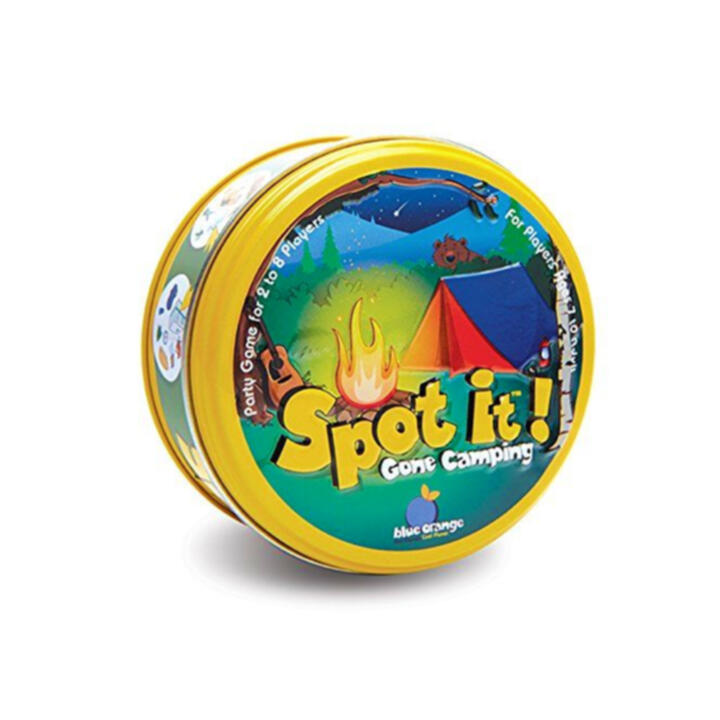
Board game Spot it! Gone Camping
This travel-sized game keeps kids on the lookout for matching creatures of the land, sky and sea. As in the original Spot It! game, there is always one-and only one-matching symbol between any two cards. Be first to spot it to win! Includes 31 cards. Age: 4+ Number of players: 2-8
35

Board game Spot it! HIP
This travel-sized game keeps kids on the lookout for matching creatures of the land, sky and sea. As in the original Spot It! game, there is always one-and only one-matching symbol between any two cards. Be first to spot it to win! Includes 31 cards. Age: 4+ Number of players: 2-8
35

Board game Spot it! Sports
This travel-sized game keeps kids on the lookout for matching creatures of the land, sky and sea. As in the original Spot It! game, there is always one-and only one-matching symbol between any two cards. Be first to spot it to win! Includes 31 cards. Age: 4+ Number of players: 2-8
35

Board game The Mind
The Mind Extreme functions like The Mind, with players trying to play cards from their hand in ascending order — without consulting one another! — so that they can complete a certain number of levels and win. The higher the level, the more cards you have in hand, giving you more to juggle, but also more information to use during play. The Mind Extreme offers a more complex challenge as now instead of a deck of cards from 1-100, you have two decks each numbered 1-50. Now you’ll have two discard piles in play, with cards from one deck needing to be played in ascending order and cards from the other being played in descending order. What’s more, some levels must be played blind — that is, with the cards discarded face down so that no one sees what you’ve played. Can all players get in the right groove and discard everything in the proper order? Age: 8+ Number of players: 2-4
35

Board game The Next Stop
The Next Stop is Educational Board Game about South Africa. It is a unique family board game that will enhance your children’s general knowledge about South Africa. It’s ideal to go along with our Footprints On Our Land programme for ages 7 and up as kids love to play and learn or learn and play! Essentially, The Next Stop it is a timed quiz game – but it is a quiz with a difference, as it not only includes question cards that will test your knowledge on South African plants, animals, places and things to do, but it also includes ‘identify the photo’ cards as well as ‘build the word’, charades and idioms (so that covers some Language Arts) too! Your kids will also love spending time with you, testing their genius and competing with other teams. At the same time, they will be developing socio-emotional skills such at team work, turn-taking, verbal communication skills, reading skills, good sportsmanship, obeying rules and more. The game is played by teams of at least two and requires a minimum of 4 players, ideally aged 10 and up, but being homeschoolers, we have a wide range of smart kids in our homes! Our 7 year old pairs up with a parent or older sibling and enjoys participating in the game too. As long as someone in the team can read, all ages can join in the fun! Younger children can operate the timer or move the playing pieces on the board. A maximum of 6 teams can play. There is no dice, teams simply take turns answering questions within 30 seconds, timed by an egg timer and moving their car playing piece each time they answer correctly. Instead of moving around a random route on a board, in The Next Stop, the board is a map of South Africa with various cities and places of interest marked on it (that’s Geography). You start with your team’s car playing piece at a South African city and follow one of 6 routes passing through 10 other towns, ‘dorpies’ or cities each, to the end of your route. Each time you answer a question correctly, your car moves to ‘the next stop’ on your route. The first team to reach the end of their route is the winning team. With 300 playing cards, you are ensured of many hours of entertainment, laughter and learning in a relaxing, relationship-building format. Age: 7+ Number of players: 4-12
50

Board game Throw Throw Burrito
The world’s first dodgeball card game. Collect cards. Play your hand. Throw things at your friends. Throw Throw Burrito is what you get when you cross a card game with dodgeball. Try to collect matching sets of cards faster than your opponents while simultaneously ducking, dodging, and throwing squishy airborne burritos. The cards you collect earn points, but getting hit by flying burritos loses them. So clear some space and put away the antiques, because you’ve never played a card game quite like this before. How it works: Place a pair of burritos on a table and draw cards. Keep your cards a secret. Rack up points by finding sets of three in the deck. Find matches before anyone else does. If someone plays Burrito Cards, a Battle ensues. Steal points from your opponents by hitting them with squishy toy burritos. Declare war on your friends. Some battles only involve a handful of players. Others force the entire table to engage in a Burrito War. Duel to determine the winner. During a Burrito Duel, two players must stand back to back, walk three paces, and FIRE. Age: 7+ Number of players: 2-6
120

Board game Ticket to Ride First Journey
Ticket to Ride: First Journey takes the gameplay of the Ticket to Ride series and scales it down for a younger audience. In general, players collect train cards, claim routes on the map, and try to connect the cities shown on their tickets. In more detail, the game board shows a map of the United States with certain cities being connected by colored paths. Each player starts with four colored train cards in hand and two tickets; each ticket shows two cities, and you’re trying to connect those two cities with a contiguous path of your trains in order to complete the ticket. On a turn, you either draw two train cards from the deck or discard train cards to claim a route between two cities; for this latter option, you must discard cards matching the color and number of spaces on that route (e.g., two yellow cards for a yellow route that’s two spaces long). If you connect the two cities shown on a ticket with a path of your trains, reveal the ticket, place it face up in front of you, then draw a new ticket. (If you can’t connect cities on either ticket because the paths are blocked, you can take your entire turn to discard those tickets and draw two new ones.) If you connect one of the West Coast cities to one of the East Coast cities with a path of your trains, you immediately claim a Coast-to-Coast ticket. The first player to complete six tickets wins! Alternatively, if someone has placed all twenty of their trains on the game board, then whoever has completed the most tickets wins! Age: 6+ Number of players: 2-4
40

Board game Twister
A large vinyl playing mat is placed on the floor, with a 6 x 4 array of spots, each spot about 6 inches in diameter. The spots are colored red, blue, yellow, and green. A player is chosen to moderate, and the rest of the players, up to 4, stand on the play mat with their feet on different spots. Each turn consists of the moderator spinning a spinner, which gives a result matching a random color with a random element from the set (left hand, right hand, left foot, right foot). Each player must put the relevant bodypart on the relevant color spot. If the bodypart is already on a spot of that color it is moved to another spot of the same color. No two players bodyparts can share the same spot. If a player falls or touches an elbow or knee to the ground they are eliminated Age: 6+ Number of players: 2+
40
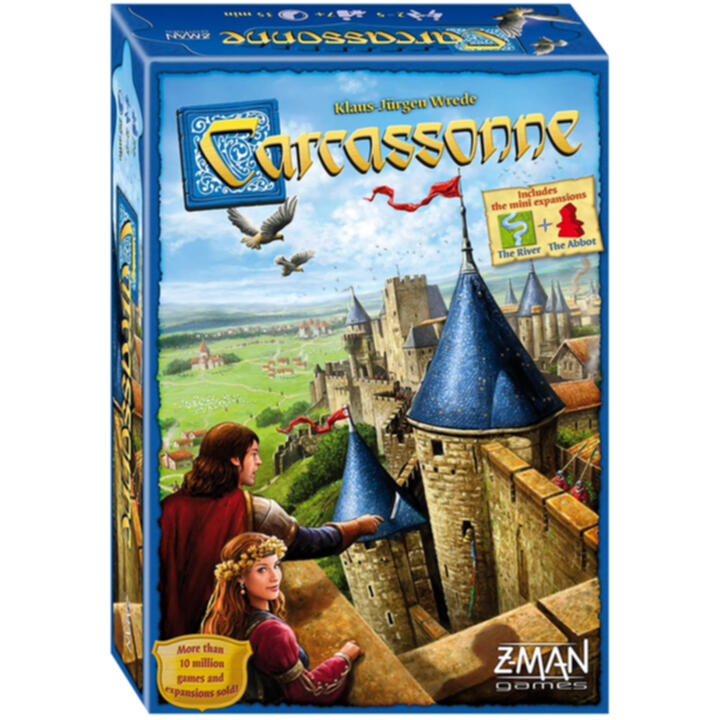
Carcassonne
Age: 7+ Number of players: 2-5 Players Playing Time: 30-45 Min Game dimension: 2.63 x 7.5 x 10.75 inches Carcassonne Board Game Carcassonne is a tile-placement game in which the players draw and place a tile with a piece of southern French landscape on it. The tile might feature a city, a road, a cloister, grassland or some combination thereof, and it must be placed adjacent to tiles that have already been played, in such a way that cities are connected to cities, roads to roads, etcetera. Having placed a tile, the player can then decide to place one of their meeples on one of the areas on it: on the city as a knight, on the road as a robber, on a cloister as a monk, or on the grass as a farmer. When that area is complete, that meeple scores points for its owner. During a game of Carcassonne, players are faced with decisions like: "Is it really worth putting my last meeple there?" or "Should I use this tile to expand my city, or should I place it near my opponent instead, giving him a hard time to complete their project and score points?" Since players place only one tile and have the option to place one meeple on it, turns proceed quickly even if it is a game full of options and possibilities.
90
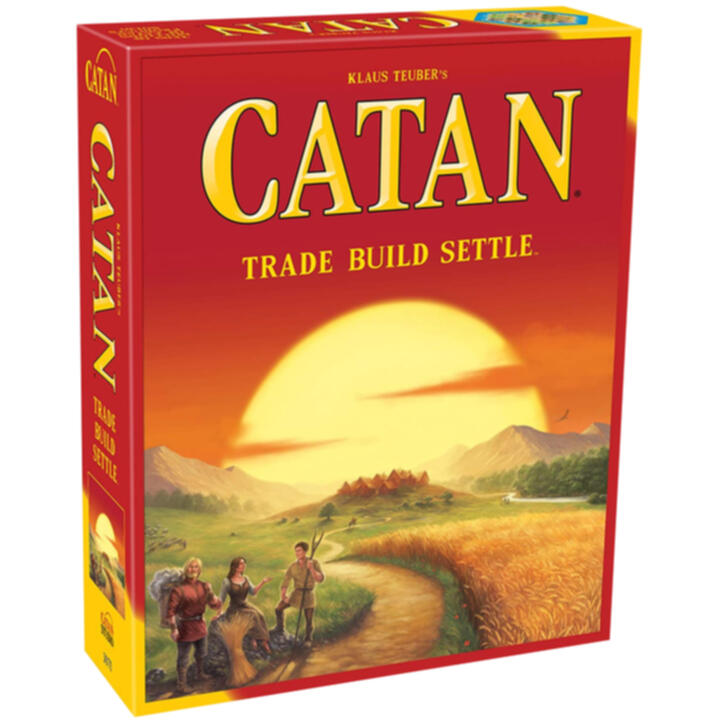
Catan
Age: 10+ Number of players: 3-4 Players Playing Time: 60-120 Min Game dimension: 11.63 x 9.5 x 3 inches Catan Board Game In CATAN (formerly The Settlers of Catan), players try to be the dominant force on the island of Catan by building settlements, cities, and roads. On each turn dice are rolled to determine what resources the island produces. Players build by spending resources (sheep, wheat, wood, brick and ore) that are depicted by these resource cards; each land type, with the exception of the unproductive desert, produces a specific resource: hills produce brick, forests produce wood, mountains produce ore, fields produce wheat, and pastures produce sheep. Setup includes randomly placing large hexagonal tiles (each showing a resource or the desert) in a honeycomb shape and surrounding them with water tiles, some of which contain ports of exchange. Number disks, which will correspond to die rolls (two 6-sided dice are used), are placed on each resource tile. Each player is given two settlements (think: houses) and roads (sticks) which are, in turn, placed on intersections and borders of the resource tiles. Players collect a hand of resource cards based on which hex tiles their last-placed house is adjacent to. A robber pawn is placed on the desert tile. A turn consists of possibly playing a development card, rolling the dice, everyone (perhaps) collecting resource cards based on the roll and position of houses (or upgraded cities—think: hotels) unless a 7 is rolled, turning in resource cards (if possible and desired) for improvements, trading cards at a port, and trading resource cards with other players. If a 7 is rolled, the active player moves the robber to a new hex tile and steals resource cards from other players who have built structures adjacent to that tile. Points are accumulated by building settlements and cities, having the longest road and the largest army (from some of the development cards), and gathering certain development cards that simply award victory points. When a player has gathered 10 points (some of which may be held in secret), he announces his total and claims the win. CATAN has won multiple awards and is one of the most popular games in recent history due to its amazing ability to appeal to experienced gamers as well as those new to the hobby.
100
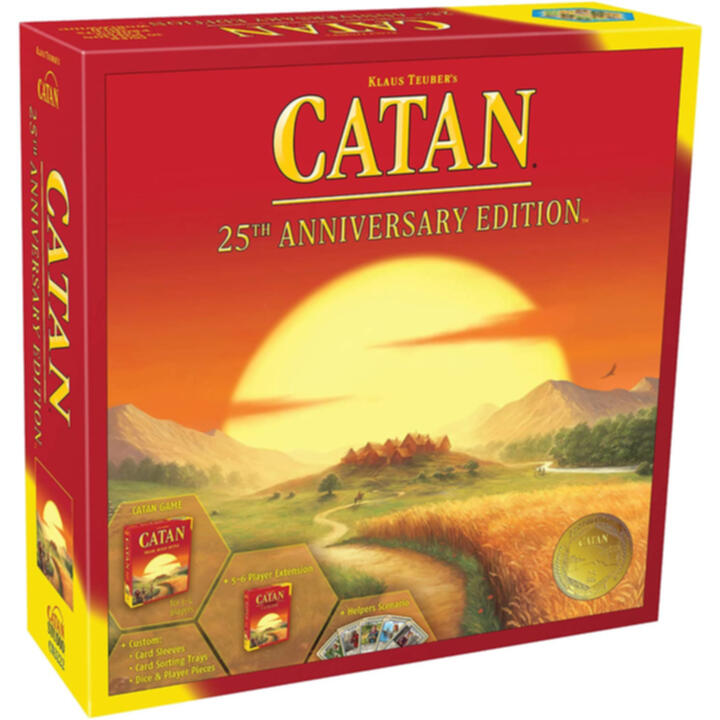
Catan 25th Anniversary Edition
Age: 10+ Number of players: 3-6 Players Playing Time: 60-120 Min Game dimension: 30cm x 30cm x 9cm Catan 25th Anniversary Edition Catan: 25th Anniversary Edition contains the Catan base game, the Catan: 5-6 Player Extension. With this version, you can play Catan in 3-6 players and you will no longer need to purchase the basic version and extension separately. Also the ideal shape of the box will allow you save all components conveniently Catan: 25th Anniversary Edition contains: 1) Catan - Base game for 3-4 Players 2) Catan 5-6 Player Extension 3) Helpers of Catan scenario - adds strategy and variety. Please note! This version does not include: 1) Card sorting trays 2) Card sleeves In CATAN (formerly The Settlers of Catan), players try to be the dominant force on the island of Catan by building settlements, cities, and roads. On each turn dice are rolled to determine what resources the island produces. Players build by spending resources (sheep, wheat, wood, brick and ore) that are depicted by these resource cards; each land type, with the exception of the unproductive desert, produces a specific resource: hills produce brick, forests produce wood, mountains produce ore, fields produce wheat, and pastures produce sheep. Setup includes randomly placing large hexagonal tiles (each showing a resource or the desert) in a honeycomb shape and surrounding them with water tiles, some of which contain ports of exchange. Number disks, which will correspond to die rolls (two 6-sided dice are used), are placed on each resource tile. Each player is given two settlements (think: houses) and roads (sticks) which are, in turn, placed on intersections and borders of the resource tiles. Players collect a hand of resource cards based on which hex tiles their last-placed house is adjacent to. A robber pawn is placed on the desert tile. A turn consists of possibly playing a development card, rolling the dice, everyone (perhaps) collecting resource cards based on the roll and position of houses (or upgraded cities—think: hotels) unless a 7 is rolled, turning in resource cards (if possible and desired) for improvements, trading cards at a port, and trading resource cards with other players. If a 7 is rolled, the active player moves the robber to a new hex tile and steals resource cards from other players who have built structures adjacent to that tile. Points are accumulated by building settlements and cities, having the longest road and the largest army (from some of the development cards), and gathering certain development cards that simply award victory points. When a player has gathered 10 points (some of which may be held in secret), he announces his total and claims the win. CATAN has won multiple awards and is one of the most popular games in recent history due to its amazing ability to appeal to experienced gamers as well as those new to the hobby.
150
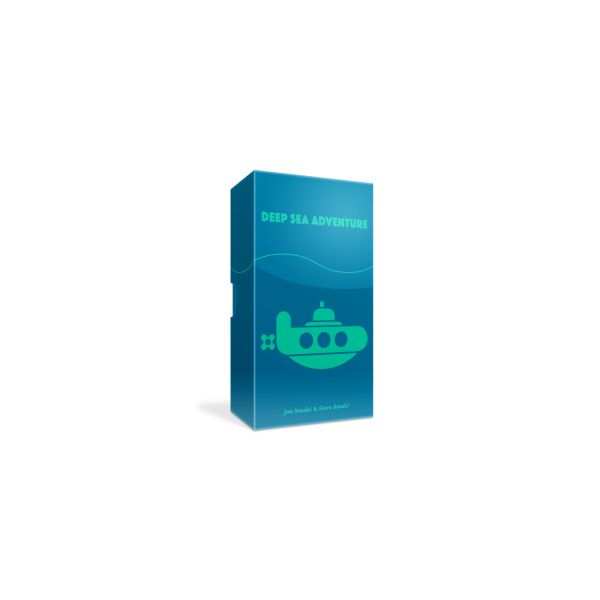
Deep Sea Adventure
Age: 8+ Number of players: 2-6 Players Playing Time: 30 Min Game dimension: 11cm x 6.5cm x 3.5cm A group of poor explorers hoping to get rich quickly heads out to recover treasures from some undersea ruins. They’re all rivals, but their budgets force them all to share a single rented submarine. In the rented submarine, they all have to share a single tank of air, as well. If they don’t get back to the sub before they run out of air, they’ll drop all their treasure. Now it’s time to see who can bring home the greatest riches. Game Objective The game takes place over 3 rounds, and the player to gain the most points over the 3 rounds is the winner. In order to gain points, you must bring the most ruins chips back to the submarine. You can only return to the submarine once per round, and you cannot progress more after returning. You cannot return to the submarine without bringing any ruins chips. Turn Progression On their turns, players conduct steps 1-4 listed below. Players take turns, going clockwise around the board, and the round ends when all players have returned to the submarine, or if the air runs out at the beginning of someone’s turn. 1) Declare if you will turn back or not. 2) Reduce air. 3) Roll the dice and advance your game piece. 4) Search. (When you have stopped moving, select one of A-C below) A) Do nothing. B) Pick up ruins chip. C) Place a ruins chip.
40
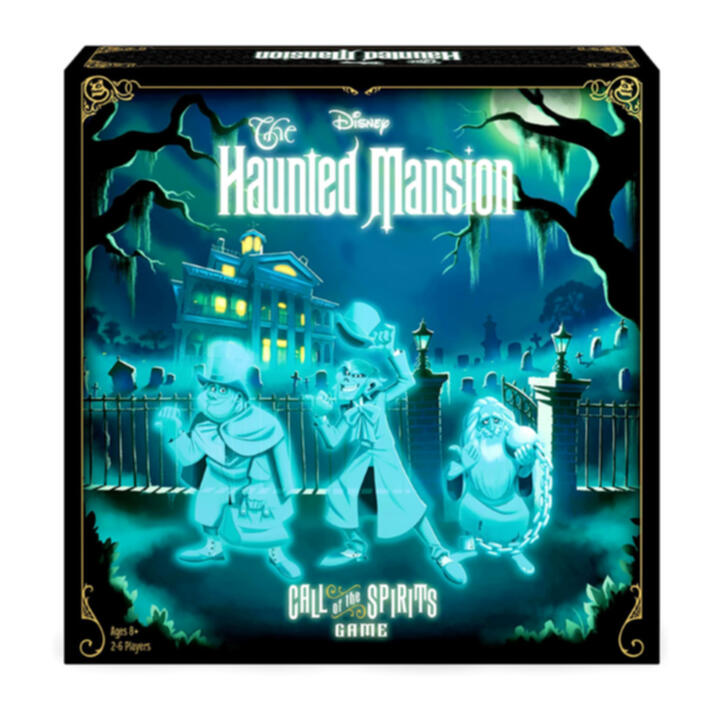
Disney The Haunted Mansion
Age: 8+ Number of players: 2-6 Players Playing Time: 30 Min Game dimension: 2.5 x 10.5 x 10.5 inches Disney’s beloved The Haunted Mansion comes to life — err, death — in this hauntingly fun family board game! Explore all the classic rooms of the ghost-infested manor, from the festivities-filled Ballroom to the Attic and out to the Graveyard and beyond in search of spirits. Beware, though, of the Hitchhiking Ghosts, who are notorious for “following you home” as that may spell your doom in the end! Players gain points by socializing with ghosts around the Haunted Mansion. Players move around the mansion by rotating the Endless Hallway around Madame Leota’s Séance Room, collecting Ghost cards in front of them in sets, each of which are worth different point values. Players want to avoid Haunt cards, as the most “haunted” player will lose points. The player with the most points at the end wins.
150
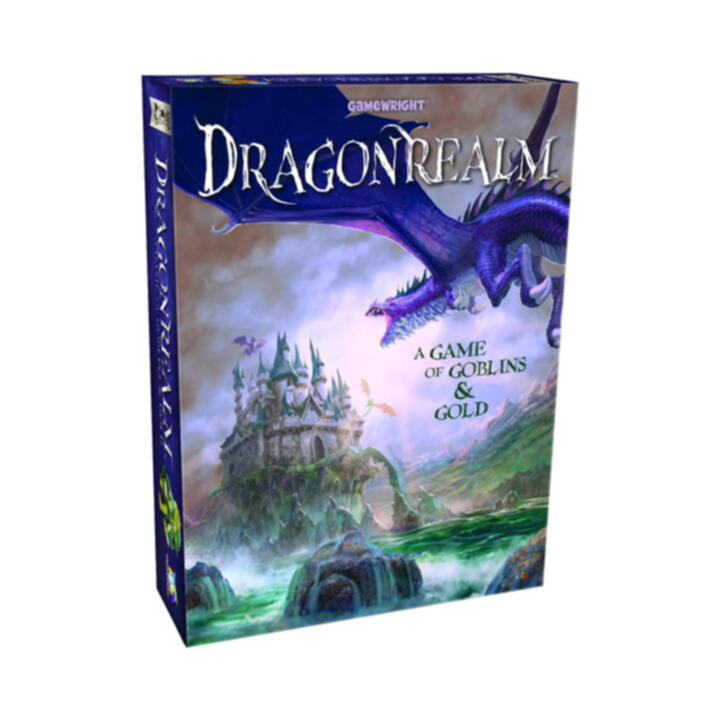
Dragonrealm
Age: 10+ Number of players: 2-4 Players Playing Time: 30 Min Game dimension: 26 x 19 x 6.5 cm Pack your lucky socks and get ready for an adventure exploring Dragonrealm! Sneak into the Witch’s Cabin, search the Ogres’ Treehouse, or storm the Dragon’s Lair. Add adventurers to different locations in the hopes of getting the most treasure. But watch out for goblins who might get there first and grab the treasure before you! In the end, the player with the most treasure wins. Using the same thematic world as Dragonwood, players now take on capturing locations using adventurer pawns. Players will play card melds of straights and sets (color or number) to roll dice to attempt to place units on locations. Once a location is full, it is scored. New locations are revealed to be captured. Players continue in this manner until a certain number of locations are captured. Each location is worth a value in points and additional points are awarded for other events.
80
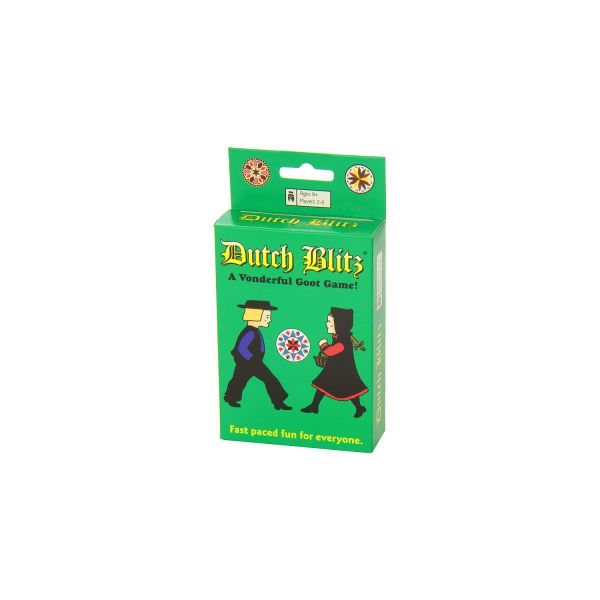
Dutch Blitz
Age: 8+ Number of players: 2-4 Players Playing Time: 15 Min Game dimension: 12.5cm x 9cm x 3cm In Dutch Blitz, each player has her own deck of forty cards, with cards 1-10 in four colors; red and blue cards show a Pennsylvania Dutch boy, while yellow and green cards show a Pennsylvania Dutch girl. Each deck has a different symbol on the back to aid with card sorting between rounds. At the start of each round, each player lays out three cards face up in front of her to create her post piles; places a face-up stack of ten cards, seeing only the top card, next to her post piles to create her blitz pile ; and holds the remaining cards in hand face down. Playing at the same time, each player tries to empty her blitz pile. If she has a 1 on the top of any face-up stack, she plays it to the center of the table to create a Dutch pile. If she has a 2 of the same color as any 1 on top of a Dutch pile, she can place the 2 on the 1. All cards on a Dutch pile must be played in ascending order and must be the same color. A player can also play from the blitz pile onto a post pile, or from one post pile onto another, but only if the numbers are in descending order and the boys and girls alternate. If a player can’t play anything, she can reveal cards from the stack in her hand, counting them out in groups of three, then laying them face up while revealing only the top card. She can play this top card onto a Dutch pile or post pile as long as she meets the rules for doing so. As soon as a player empties her blitz pile, the round ends. Each player scores 1 point for each of her cards among the Dutch piles, then loses 2 points for each card remaining in her blitz pile. Players then sort all the cards and play another round. As soon as at least one player has at least 75 points, the game ends and the player with the most points wins.
40

